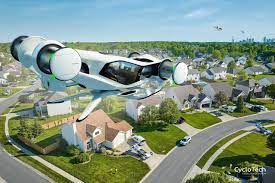
Breaking News
 NonConformist Series: Practical Wealth - Join us virtually Dec 29-30, 2025
NonConformist Series: Practical Wealth - Join us virtually Dec 29-30, 2025
 New bill would allow private citizens to fight cartels: 'WE ARE UNDER ATTACK'
New bill would allow private citizens to fight cartels: 'WE ARE UNDER ATTACK'
 Carnivore Got Me 90% There. This One Drink Changed Everything
Carnivore Got Me 90% There. This One Drink Changed Everything
Top Tech News
 Perfect Aircrete, Kitchen Ingredients.
Perfect Aircrete, Kitchen Ingredients.
 Futuristic pixel-raising display lets you feel what's onscreen
Futuristic pixel-raising display lets you feel what's onscreen
 Cutting-Edge Facility Generates Pure Water and Hydrogen Fuel from Seawater for Mere Pennies
Cutting-Edge Facility Generates Pure Water and Hydrogen Fuel from Seawater for Mere Pennies
 This tiny dev board is packed with features for ambitious makers
This tiny dev board is packed with features for ambitious makers
 Scientists Discover Gel to Regrow Tooth Enamel
Scientists Discover Gel to Regrow Tooth Enamel
 Vitamin C and Dandelion Root Killing Cancer Cells -- as Former CDC Director Calls for COVID-19...
Vitamin C and Dandelion Root Killing Cancer Cells -- as Former CDC Director Calls for COVID-19...
 Galactic Brain: US firm plans space-based data centers, power grid to challenge China
Galactic Brain: US firm plans space-based data centers, power grid to challenge China
 A microbial cleanup for glyphosate just earned a patent. Here's why that matters
A microbial cleanup for glyphosate just earned a patent. Here's why that matters
 Japan Breaks Internet Speed Record with 5 Million Times Faster Data Transfer
Japan Breaks Internet Speed Record with 5 Million Times Faster Data Transfer
CycloTech unveils its CycloRotor-powered eVTOL air car concept

We've written plenty about these guys over the years. Operating out of Linz, Austria, CycloTech exists to propagate and commercialize a single idea: the CycloRotor propulsion system.
In the marine world, they're known as Voith-Schneider propellers, and these spinning barrels of thrust have "walls" made of wing blades, designed to tilt as the barrel spins thanks to conrods connected to a swashplate. This arrangement works a lot like the way helicopter rotors work – causing the blades to continuously vary their pitch as the barrel rotates, so that thrust peaks at a certain point in the rotation and quickly dies back down.
This arrangement means that you can run the barrels around at a more or less constant motor speed, and then direct thrust nearly instantly in 360 degrees – mainly downward, in this application, but it's just as easy for these barrels to fire thrust rearward, to accelerate you forward; forward, to effectively hit the air brakes; or even upward, if gravity's not going to accelerate you quickly enough toward the ground.

 Aluminum Causes Brain Damage
Aluminum Causes Brain Damage Advanced Propulsion Resources Part 1 of 2
Advanced Propulsion Resources Part 1 of 2

